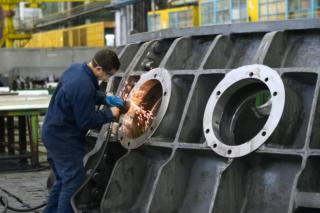
4 Ways To Drive Innovation In Your Manufacturing Business
One of the challenges that most businesses still face is innovation, and the manufacturing sector is no different. With tech solutions like robotics and automation rapidly growing, there is the need to have new skill sets that go with the times. That means that manufacturing businesses need to find innovative ways to tap into their human potential to remain competitive in the marketplace. Innovation plays a huge role in encouraging workers to develop ideas to help their businesses thrive in such changing times. So, is your manufacturing business behind in terms of innovation? Use these tips to change this.
Increase productivity
Increasing productivity should focus on two main areas. The first one should target operational productivity. That means exploring all relevant tools, resources, equipment, tech solutions, etc., that will help make the production process more efficient and effective. For example, you can use shrink sleeve machinery to work on various container shapes and materials in your packaging processes. This way, you’ll save loads of time and produce top-quality packaging. Operational productivity also involves equipping your workforce to use the necessary tech solutions.
The second part of increasing productivity should focus on the supply chain. The aim here is to find ways to minimize cost, generate new value, and increase operational stability. You can achieve this by prioritizing value recovery, product design, production, and supply chain management.
But what exactly might get in the way of this? Believe it or not, it’s not always about buying more equipment, hiring more employees, or get getting consultants on board to help. Sometimes, it’s not enough. Have you ever considered the cleanliness? Now, it seems to basic, so obvious, but honestly, when was the last time you hired industrial cleaning services for your manufacturing business?
It’s not just about cleanliness (in terms of aesthetics); it’s about getting into those nooks and crannies, removing build-up, and preventing fires and other disasters. Having the business cleaned thoroughly could be exactly what you need for better productivity.
Transition to the future of work
It is always important to look ahead into the future of manufacturing and how to meet the needs of a manufacturing workforce. At the same time, businesses need to position themselves to be prepared for any shift expected in various manufacturing processes and the type of workforce they’ll need to adapt to that shift.
Encourage practices that spark innovation
There is no need to implement a capital-intensive R&D initiative or invest in expensive tools and processes. In most cases, you can inspire innovation by encouraging your workers to contribute their ideas in various ways. The more your employees feel that they can make an impact, the more they’ll be determined to. That means you need to put systems in place that give your employers a voice. For example, you can try gathering your workers once every month to source new ideas and let them see their ideas taken into consideration.
Implement a continuous culture of improvement
Having a system or culture ensures that improvement is a continuous process (not a destination) is vital to any innovative goal. It fosters a mindset or culture of excellence and innovation in your workforce offers them the perfect breeding ground to nurse their creative skills. However, it is also essential to ensure that you direct your improvement culture to align with your organizational goals.
Here, you can focus on five main strategies:
- trust in leadership
- create opportunities for personal growth
- build a positive work environment
- offer supportive management
- focus on creating meaningful work.






